Hong & colleagues found that PPARd expression in endothelial cells is essential to maintain pulmonary vascular barrier integrity upon injury.
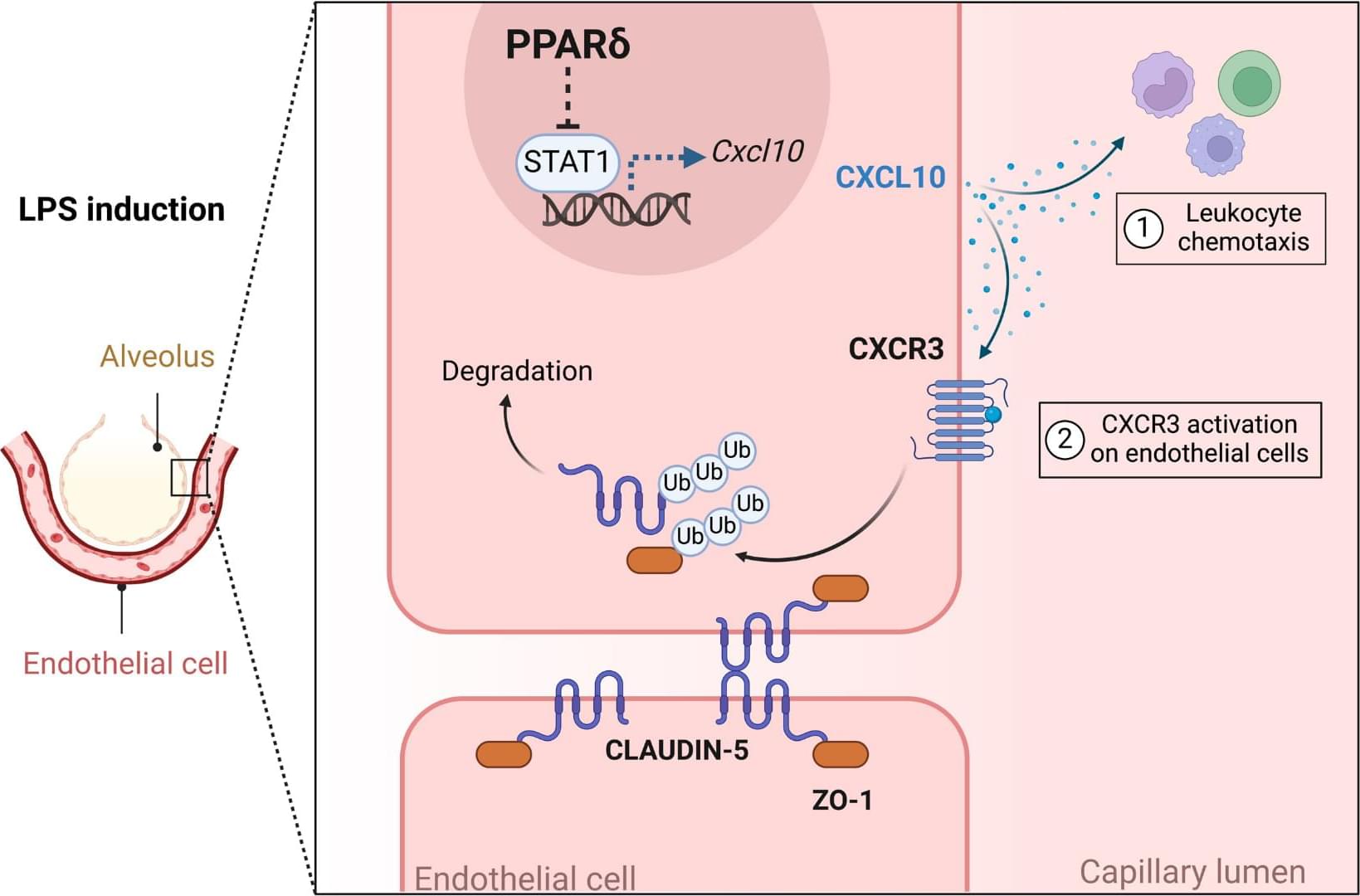


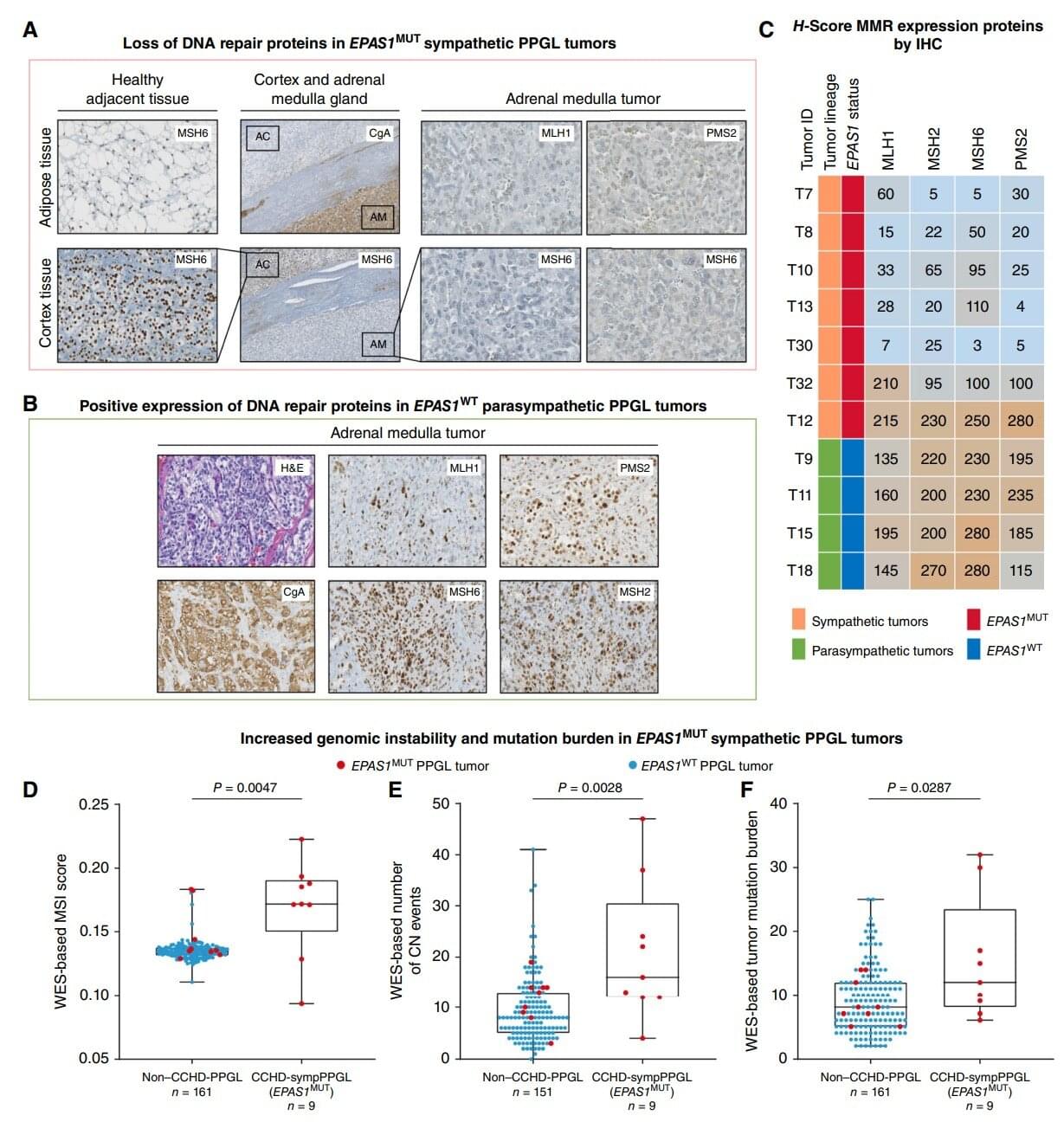
Results of a study show convergent genetic adaptation under hypoxia (lack of oxygen) between populations living at high-altitude in the Himalayan region such as Tibetans and Sherpas, and the development of oxygen-starved cancer cells. The study was directed by Rodrigo Toledo, Head of the Vall d’Hebron Institute of Oncology’s (VHIO) Biomarkers and Clonal Dynamics Group and published in the journal Cancer Discovery.
Patients with cyanotic congenital heart disease (CCHD) are chronically hypoxic and have an estimated six-fold higher risk of developing pheochromocytoma and paraganglioma (PPGL), which are associated with neuroendocrine tumors (NETs) of the adrenal glands and/or paraganglia, respectively. These cancers can continue to grow and proliferate under chronic hypoxia.
“With this study, we aimed to achieve deeper insights into how tumors can survive, grow, and even metastasize under low oxygen conditions, known as hypoxia. Our findings reveal a broad convergence in genetic adaptation in tumors that continue to develop and grow under hypoxia, and in high-altitude populations who thrive in such a challenging environment,” said Toledo, corresponding author of this present article.
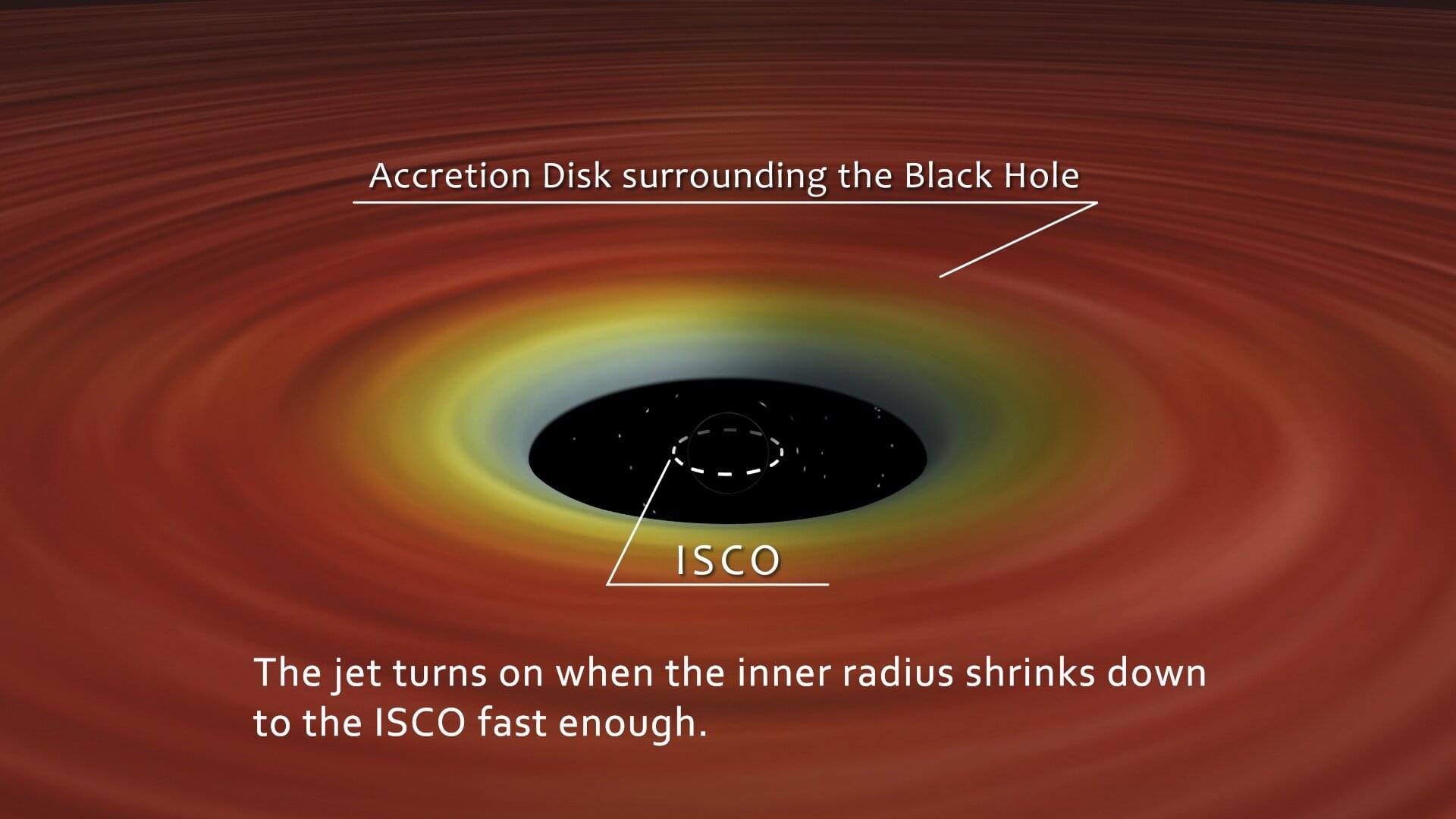
Black holes are fundamental to the structure of galaxies and critical in our understanding of gravity, space, and time. A stellar mass black hole is a type of black hole that forms from the gravitational collapse of a massive star at the end of its life cycle. These black holes typically have masses ranging from about 3 to 20 times the mass of our sun.
Sometimes black holes generate beams of ionized gas (plasma) that shoot outward at nearly light speed. Although discovered more than a century ago, how and why jets occur has remained a mystery, described as one of the “wonders of physics.”
Prof. Kazutaka Yamaoka from Nagoya University in Japan, along with his colleagues from the University of Toyama and other international institutes, have discovered key conditions needed for a stellar black hole to create plasma jets. Their findings, published in Publications of the Astronomical Society of Japan, show that when superheated gas material experiences a rapid shrinkage toward the black hole, jet formation occurs.
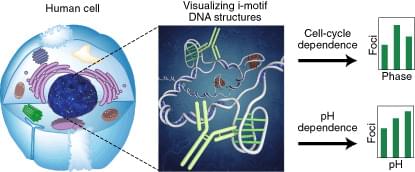
I-motif DNA structures are thought to form in cytosine-rich regions of the genome and to have regulatory functions; however, in vivo evidence for the existence of such structures has so far remained elusive. Now an engineered antibody that is selective for i-motif structures has been developed and used to detect i-motifs in the nuclei of human cells.

A new hope for diabetes patients: reprogrammed stem cells achieve insulin independence.
In a pioneering medical breakthrough, scientists in China have successfully reversed type 1 diabetes in a patient by reprogramming her own fat cells into insulin-producing pancreatic cells. This revolutionary approach offers a promising alternative to current diabetes treatments and could pave the way for a potential cure for millions of people affected by this chronic autoimmune disease. The patient involved in the study remains free from insulin injections more than a year after receiving the experimental treatment, highlighting the potential of stem cell therapy as a game-changer in diabetes care.

Much as a pilot might practice maneuvers in a flight simulator, scientists might soon be able to perform experiments on a realistic simulation of the mouse brain. In a new study, Stanford Medicine researchers and collaborators used an artificial intelligence model to build a “digital twin” of the part of the mouse brain that processes visual information.
The digital twin was trained on large datasets of brain activity collected from the visual cortex of real mice as they watched movie clips. It could then predict the response of tens of thousands of neurons to new videos and images.
Digital twins could make studying the inner workings of the brain easier and more efficient.
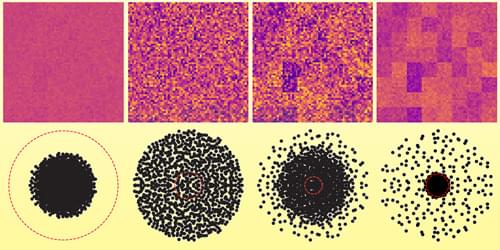
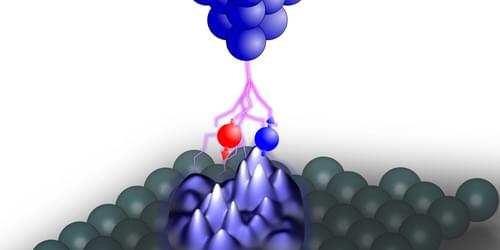
A single molecule provides a controllable connection between a normal metal and a superconductor.
Researchers have caused a material’s superconductivity to permeate into a nearby normal metal via a single molecule [1]. They showed that this effect could be controlled and say that this control could allow the creation of so-called Majorana quasiparticles, which many research teams are exploring as future quantum bits (qubits) for quantum computers.
The spread of superconductivity into a normal metal in contact with a superconductor has been studied for decades. These experiments are typically done with thin films of the materials. However, the microscopic mechanism underpinning the effect—a normal-to-super-current conversion known as Andreev reflection—can be hard to control, and control is essential for applications of the effect.
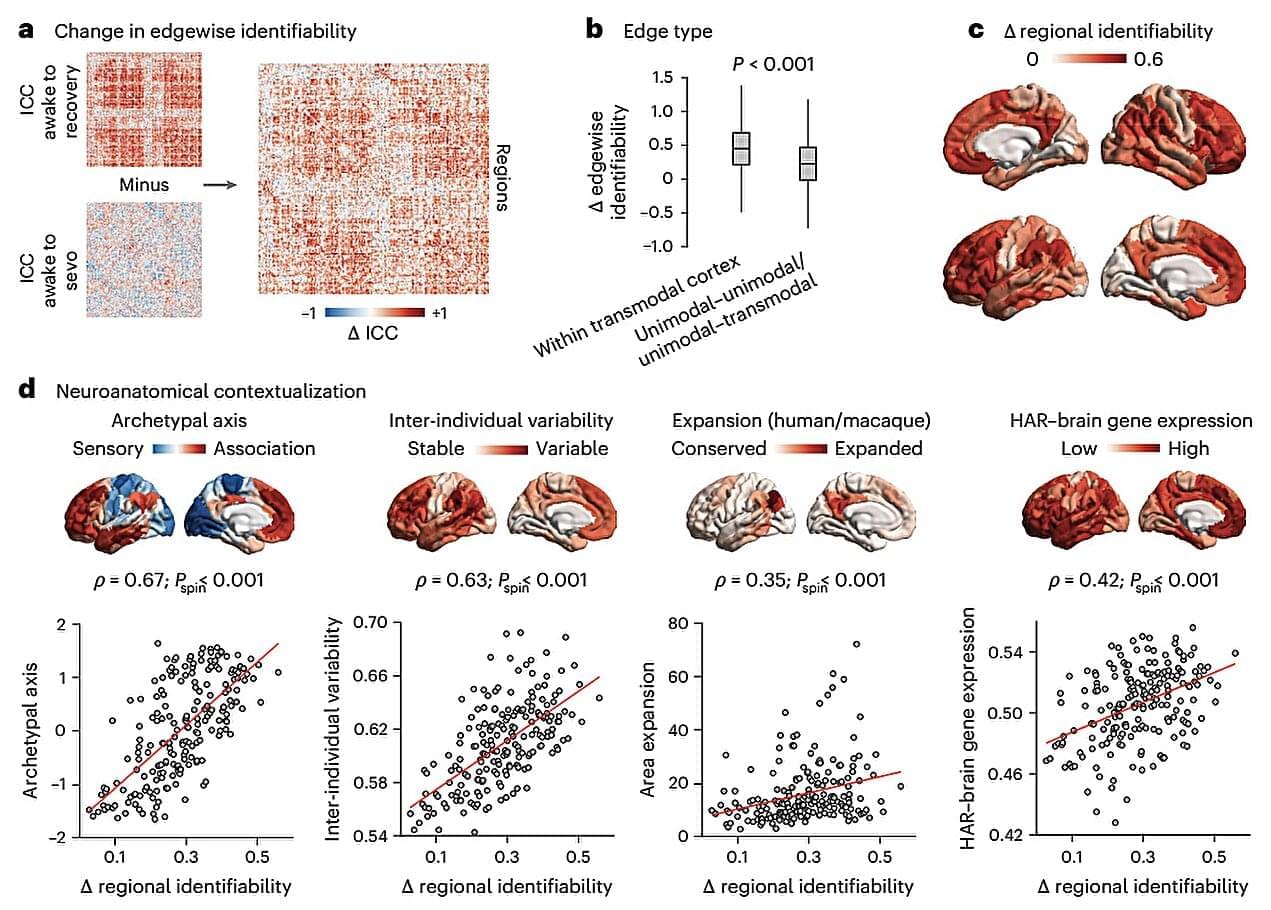
Past psychology research suggests that different people display characteristic patterns of spontaneous thought, emotions and behaviors. These patterns make the brains of distinct individuals unique, to the point that neuroscientists can often tell them apart based on their neural activity.
Researchers at McGill University, University of Cambridge and other institutes recently carried out a study aimed at investigating how general anesthesia influences the unique neural activity signatures that characterize the brains of different people and animals.
Their findings, published in Nature Human Behavior, show that general anesthesia suppresses each brain’s unique functional connectivity patterns (i.e., the connections and communication patterns between different regions of the brain), both in humans and other species.